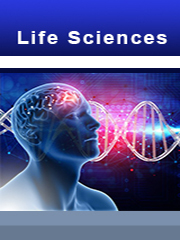A biosimilar is a biologic medical product highly similar to another already approved biological medicine (the 'reference medicine'). Biosimilars are approved according to the same standards of pharmaceutical quality, safety and efficacy that apply to all biological medicines. Biosimilars are officially approved versions of original "innovator" products and can be manufactured when the original product's patent expires. Reference to the innovator product is an integral component of the approval.
This report aims to provide a comprehensive presentation of the global market for Biosimilars, with both quantitative and qualitative analysis, to help readers develop business/growth strategies, assess the market competitive situation, analyze their position in the current marketplace, and make informed business decisions regarding Biosimilars. This report contains market size and forecasts of Biosimilars in global, including the following market information:
- Global Biosimilars Market Revenue, 2018-2023, 2024-2029, ($ millions)
- Global Biosimilars Market Sales, 2018-2023, 2024-2029, (K Units)
Global top five Biosimilars companies in 2022 (%)
The global Biosimilars market was valued at US$ 5893.3 million in 2022 and is projected to reach US$ 17930 million by 2029, at a CAGR of 17.2% during the forecast period. The influence of COVID-19 and the Russia-Ukraine War were considered while estimating market sizes.
The U.S. Market is Estimated at $ Million in 2022, While China is Forecast to Reach $ Million.
Recombinant Non-glycosylated Proteins (Insulin, rHGH, Interferon) Segment to Reach $ Million by 2029, with a % CAGR in next six years.
The global key manufacturers of Biosimilars include Pfizer, Novartis, Biocon, Biogen, Fresenius Kabi AG, Boehringer Ingelheim, Merck KgaA, Mylan and Eli Lilly, etc. in 2022, the global top five players have a share approximately % in terms of revenue.
We surveyed the Biosimilars manufacturers, suppliers, distributors and industry experts on this industry, involving the sales, revenue, demand, price change, product type, recent development and plan, industry trends, drivers, challenges, obstacles, and potential risks.
Total Market by Segment:
Global Biosimilars Market, by Type, 2018-2023, 2024-2029 ($ Millions) & (K Units)
Global Biosimilars Market Segment Percentages, by Type, 2022 (%)
- Recombinant Non-glycosylated Proteins (Insulin, rHGH, Interferon)
- Recombinant Glycosylated Proteins
Global Biosimilars Market, by Application, 2018-2023, 2024-2029 ($ Millions) & (K Units)
Global Biosimilars Market Segment Percentages, by Application, 2022 (%)
- Oncology
- Blood Disorders
- Growth Hormonal Deficiency
- Chronic and Autoimmune Disorders
- Others
Global Biosimilars Market, By Region and Country, 2018-2023, 2024-2029 ($ Millions) & (K Units)
Global Biosimilars Market Segment Percentages, By Region and Country, 2022 (%)
- North America
- US
- Canada
- Mexico
- Europe
- Germany
- France
- U.K.
- Italy
- Russia
- Nordic Countries
- Benelux
- Rest of Europe
- Asia
- China
- Japan
- South Korea
- Southeast Asia
- India
- Rest of Asia
- South America
- Brazil
- Argentina
- Rest of South America
- Middle East & Africa
- Turkey
- Israel
- Saudi Arabia
- UAE
- Rest of Middle East & Africa
Competitor Analysis
The report also provides analysis of leading market participants including:
- Key companies Biosimilars revenues in global market, 2018-2023 (Estimated), ($ millions)
- Key companies Biosimilars revenues share in global market, 2022 (%)
- Key companies Biosimilars sales in global market, 2018-2023 (Estimated), (K Units)
- Key companies Biosimilars sales share in global market, 2022 (%)
- Further, the report presents profiles of competitors in the market, key players include:
- Pfizer
- Novartis
- Biocon
- Biogen
- Fresenius Kabi AG
- Boehringer Ingelheim
- Merck KgaA
- Mylan
- Eli Lilly
- Teva Pharmaceutical
- Dr. Reddy's Laboratories
- Amgen
- Celltrion
- Samsung Biologics
- Roche
- Probiomed
- Apotex
- Chong Kun Dang
- JCR Pharmaceuticals
- Gan & Lee Pharmaceuticals
- Gedeon Richter
- Biocad
- Coherus Bioscience
- Stada Arzneimittel AG
- Outline of Major Chapters:
- Chapter 1: Introduces the definition of Biosimilars, market overview.
- Chapter 2: Global Biosimilars market size in revenue and volume.
- Chapter 3: Detailed analysis of Biosimilars manufacturers competitive landscape, price, sales and revenue market share, latest development plan, merger, and acquisition information, etc.
- Chapter 4: Provides the analysis of various market segments by type, covering the market size and development potential of each market segment, to help readers find the blue ocean market in different market segments.
- Chapter 5: Provides the analysis of various market segments by application, covering the market size and development potential of each market segment, to help readers find the blue ocean market in different downstream markets.
- Chapter 6: Sales of Biosimilars in regional level and country level. It provides a quantitative analysis of the market size and development potential of each region and its main countries and introduces the market development, future development prospects, market space of each country in the world.
- Chapter 7: Provides profiles of key players, introducing the basic situation of the main companies in the market in detail, including product sales, revenue, price, gross margin, product introduction, recent development, etc.
- Chapter 8: Global Biosimilars capacity by region & country.
- Chapter 9: Introduces the market dynamics, latest developments of the market, the driving factors and restrictive factors of the market, the challenges and risks faced by manufacturers in the industry, and the analysis of relevant policies in the industry.
- Chapter 10: Analysis of industrial chain, including the upstream and downstream of the industry.
- Chapter 11: The main points and conclusions of the report.
